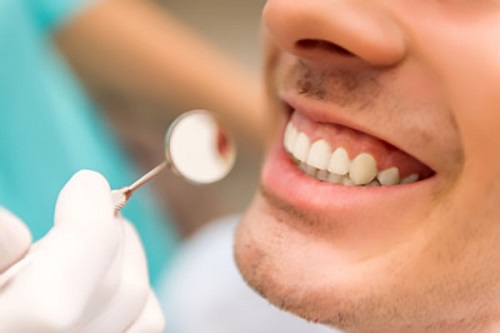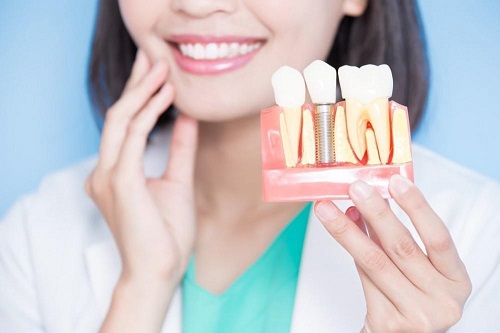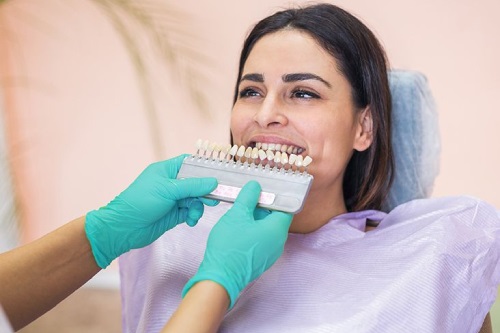

Aashi Multispeciality Dental Clinic
Experience the Exceptional Dental Care with a Gentle Touch.
Discover premier oral care at Aashi Multispeciality Dental Clinic, the leading dental clinic in Nagpur. Whether you’re seeking relief from jaw pain or a beautifully crafted smile, our personalized approach guarantees exceptional care and excellence for every patient.



Need Dental Services ?
Call on : (+91) 98908 21911

Opening Hours
Mon to Sat 10:30 Am - 08.00Pm

+ About Us +
Aashi Multispeciality Dental Clinic
A story of three generations
Aashi Multispeciality Dental Clinic was started by Dr VH Rane in the year 1969 when he came back to India after 11 years of dentistry practice in A Edinburg, London.
Dr Anil Chaudhari joined Aashi Multispeciality Dental Clinic in 1980 after graduating from Government Dental College, Mumbai. He did his implant course from France in 1997 after which the facility of the implant prosthesis was made available at the clinic.
+ Team +
Our Friendly Dentists Team

Dr. Pooja Poddar
Epitome of Selflessness
Dr. Pooja Poddar completed her graduation in dentistry from Nair Dental College (Mumbal) in 2005 and joined Aashi Dental Clinic…

Dr. Anil Chaudhari
The Stalwart of Dentistry
An expert in the field of dental health, Dr. Anil has been working hard selflessly & treating his patients with utmost care…
+ Visit Clinic +
+ Why Choose Us +
Diagnosis of Dental Diseases
Compassionate Care
Aashi Dental Clinic team will put your dental anxiety at ease.
Modern Clinic
Comforting amenities & the latest technology in a modern space.

Convenient Location
Located in Nagpur, and we’re open on weekends!
Emergency Dental Care
Emergency & Same Day appointments are usually available.
+ Testimonials +
What Our Patients Say About Us
"Good doctor, best treatment...nice experience 👍"
Sweta Thawri
22. August, 2022.
Well-equipped clinic. proper treatment with gentle handling. satisfied with treatment.
Shital Surbhi
22. August, 2022.
Best dental clinic....satisfied treatment
Shubham Ladhi
22. August, 2022.
"Good diagnosis and treatment, fresh ambiance"
Pranay Jambutkar
22. August, 2022.
+ FAQ's +
Frequently Asked Questions
A. Children have 2 sets of teeth- primary or
‘milk’ teeth & permanent. Both are important for chewing, speech & for appearance. Additionally, milk teeth are important for proper development of muscles for chewing & keeping space available for permanent teeth to erupt into their right positions.
A. Generally by the age of 2 years all the 20 milk teeth erupt. They fall between the age of 7 & 12 years & are replaced by permanent teeth. But we have 32 permanent teeth & the additional 12 teeth erupt behind the milk teeth – the first one of these erupts at the age of 6 years and is called the first permanent molar- this is a very important tooth in the arch. All permanent teeth erupt by the age of 14 years except “wisdom teeth” which usually erupt between the age of 18 & 25 years. So, between the age of 6 & 12 years a child has both milk & permanent teeth in the mouth – this is called the ‘Mixed Dentition’. Parents of these children often mistakenly think that the tooth though decayed may be allowed to fall as “it will come again”.
A. Many parents think that the fever, diarrhoea children get while teeth are erupting is because of eruption. This is only a coincidence. At that age children are very active & tend to put everything into the mouth. This causes infection around the eruption teeth & upsets stomach.
A. Usually the permanent teeth are located just below their primary (milk) predecessors. With the pressure from the permanent tooth,the root of the milk tooth gets ‘eaten away & the milk tooth falls to make was for the permanent tooth. But if the permanent tooth is placed too far away, it will erupt even without the predecessor falling as there is no obstruction and then we see double teeth-a new tooth behind or by the side of the old one. Such a situation should not be allowed to remain for long – say more than a couple of weeks. Timely removal of the milk tooth in such a case will allow the permanent tooth to take its right place.
A. It would differ from case to case but the commonest is 12-13 years. Many times early commencement of treatment gives better results but treatment is possible at an older age also. The right specialist to consult for this is an Orthodontist.
A. As soon as teeth erupt. Initially parents must brush the child’s teeth as the child is unable to do so. The child can gradually learn. There is no special or separate ‘balanced diet’ for teeth. A child otherwise healthy, does not require any tonic for teeth.
A. Calcium helps only when the teeth are
being formed within the jaw & not after they
have erupted. Fluorides help because they
increase the resistance of the tooth to acid-
dissolution which is what happens in tooth
decay. Fluorides can be given in drinking
water, as tablets & can also be applied to teeth
by the dentist or through the toothpaste.
A. The causes of tooth decay in children are
the same as in adults but the progress is faster. An important factor in children is too long bottle feeding. Many of the children in whom bottle feeding with milk continues beyond the age of 8 months, develop what is called nursing bottle carries’ which is extensive decay of teeth involving many teeth. Milk teeth being small in size, decay reaches the nerve (pulp) of the tooth very soon and causes pain. This is also why tooth destruction takes place very fast & some parents feel that when the teeth appeared itself, they were decayed Remember, teeth can decay only after eruption.
A Treatment of decay is the same whether it is for milk teeth or permanent Fillings, Root canal treatment & crowns. For milk teeth readymade crowns are also available. If the child is unable to co-operate for treatment, it is better to get the child treated under general anaesthesia rather than lose the advantages of treatment.
A. Although it is true that all milk teeth are replaced by permanent teeth, this must happen at the ‘right age’. There is an appropriate time for each milk tooth to fall & the permanent successor to take it’s place. If the milk tooth is lost, for any reason, much earlier than the scheduled time of eruption of the permanent successor, then it is very likely that the space created by loss of the milk tooth would reduce or even close because of drifting of the adjacent teeth & when the time for the permanent tooth to erupt comes, it has no place, so either it gets locked within the jaw or erupts in an abnormal position. So, as a broad guideline, by following conservative treatment procedures, all attempts should be made to avoid removal of primary (m) Incisors below the age of 4 years and other milk teeth below the age of 9 years Should such early removal of teeth becomes necessary, an appliance called the “Space Maintainer should be given to the child to wear.
A. There is no foolproof method preventing tooth decay. But it can be kept under control and its ill effects minimized by cleaning of teeth, reducing frequency of sugar consumption, proper diet, regular check-up by regular the dentist, treatment whenever necessary & application of fluorides
A. Thumb-sucking, mouth breathing, tongue- thrusting and such habits do not affect the positions of teeth if they are discontinued by the age of 5 years. Such habits can be due to variety of reasons – including psychological Attempts must be made to pin-point the cause & treat it to discontinue the habit. If such attempts fail or do not reveal any particular cause, certain ‘Habit – breaking Appliances can be constructed, to be worn by the child to get rid of the habit.
A. The first visit should not wait till a tooth start paining. It should be at the age of 2.5 years and then for 6 monthly check-ups.
A. The child should be examined by a dentist after the injury as soon as possible – within hours. Whether the tooth break, shakes or not, it may require treatment immediately or after observation for some months. Such teeth have to be examined by the dentist at periodic intervals for upto 2 years after the injury. If the tooth falls out due to the injury, wash it and try to place it back. If this is not possible immerse it in milk & if milk is not available, in water & take it to the dentist immediately-reporting within 2 hours of the injury is very useful.
A. In some children like other milestones, eruption of the teeth may be delayed. It is wise to consult a dentist if this happens. He may advise an X-ray to confirm that the tooth is present & to locate it in the jaw after seeing the position in the jaw he may advise some treatment like a small cut in the gum or just ‘wait & watch’. Very rarely the tooth may be congenitally absent.
Our Treatments
Clinic Details
Address : Residency Rd, opposite Tuli International, Liberty Chowk, Sadar, Nagpur, Maharashtra 440001.
Email : aashidental@gmail.com
Phone : (+91) 98908 21911
© 2024 Aashi Multispeciality Dental Clinic | All Rights Reserved. | Design & Developed By PDigiWorld




